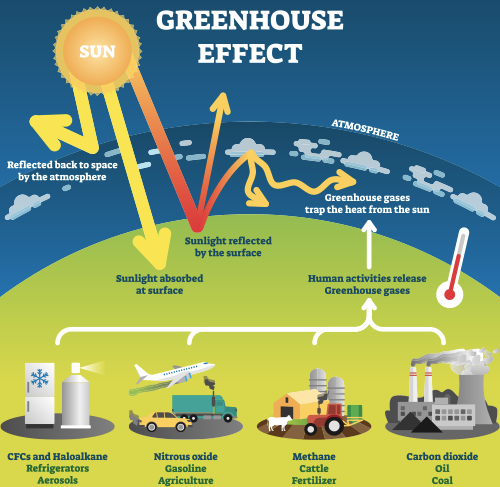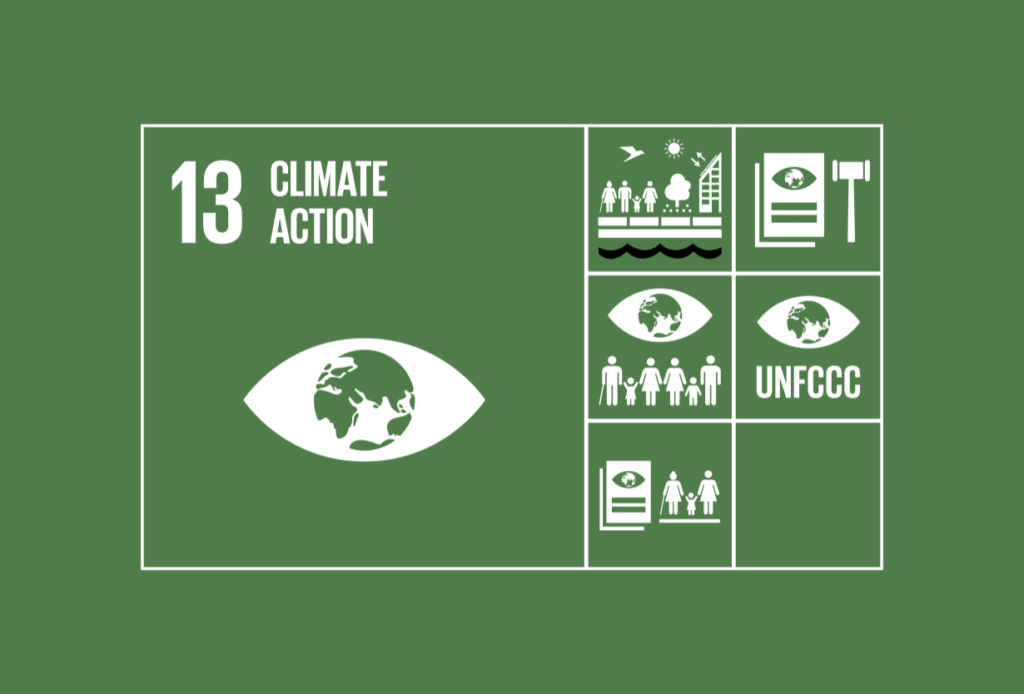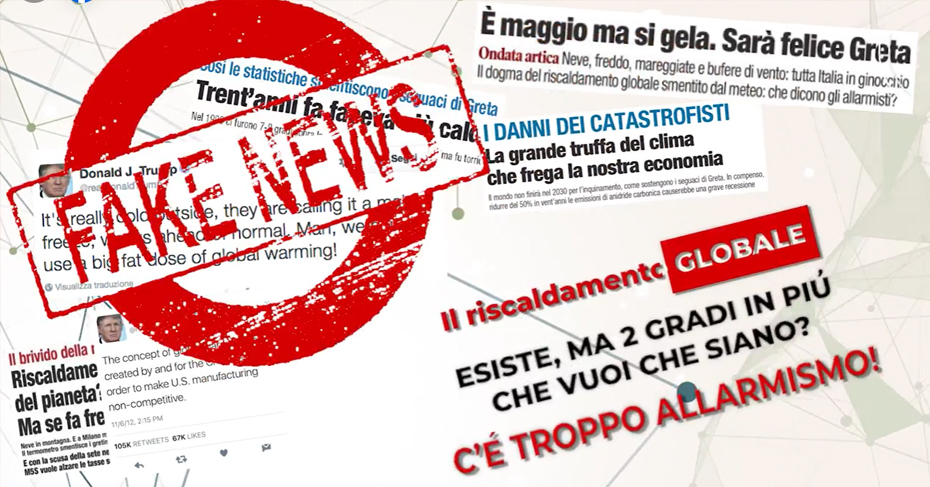Climate Change
Climate change is a critical and intricate subject, involving long-term shifts in global or regional weather patterns, such as changes in average temperatures and precipitation. These shifts are frequently linked to human activities, particularly the rise in greenhouse gas emissions due to fossil fuel combustion and extensive deforestation.
Climate change has profoundly harmful effects, resulting in elevated sea levels, increased ocean acidification, and rising global temperatures. Additionally, there’s a noticeable increase in the frequency and intensity of extreme weather events such as hurricanes, droughts, and floods, posing significant challenges to ecosystems and human communities.
Mitigating climate change is vital, involving the reduction of greenhouse gas emissions and adapting to existing changes to limit future damage. This demands coordinated efforts across global, national, and local levels, engaging governments, businesses, organizations, and individuals. Collaborative action is crucial to effectively tackle the challenges of climate change and secure a sustainable future for upcoming generations.
History of Climate Change Studies
The study of climate change history dates back to the 19th century, when visionary scientists like Joseph Fourier and John Tyndall initiated pivotal research. They sought to understand the role of greenhouse gases in the greenhouse effect. Their pioneering work established a crucial foundation for grasping how these gases interact with Earth’s energy system, contributing to global warming.

In 1896, the eminent Swedish physicist Svante Arrhenius released an impactful study forecasting the effects of elevated atmospheric carbon dioxide, indicating a possible rise in global temperatures. This pioneering research was among the first to recognize the anthropogenic greenhouse effect, underscoring the human role in climate change.
Throughout the 20th century, scientists focused on gathering data and developing advanced models to better understand Earth’s climate. In the 1950s, meteorologist Gilbert Plass made notable progress with his research on the greenhouse effect, revealing key insights into climate change mechanisms. The 1960s and 1970s saw further advancements as scientists began using the first computer climate models. These groundbreaking tools allowed researchers to simulate and predict climate change, marking a pivotal advancement in climate science.
During the 1980s and 1990s, awareness and recognition of climate change as a major threat grew among the public and scientific communities. This escalating concern led to the creation of the Intergovernmental Panel on Climate Change (IPCC) in 1988. Since then, the IPCC has become the leading authority on assessing the scientific dimensions of climate change, consistently delivering in-depth reports that summarize and evaluate the current scientific understanding and knowledge on the issue.
In the 21st century, climate change studies have advanced considerably, concentrating on the complex dynamics of climate systems. There is an increasing emphasis on recognizing both present and future effects of climate change and on crafting effective strategies for mitigation and adaptation. Continuing research is vital in confronting this global issue, offering critical insights and solutions to address the urgent challenges of climate change.
Causes and Consequences

Climate change is driven by a combination of human activities and natural processes. Here is an in-depth look at the main causes and their resulting impacts:
Causes:
Greenhouse Gas Emissions: The burning of fossil fuels such as coal, oil, and natural gas for energy production, transportation, industrial processes, and other human activities releases significant amounts of greenhouse gases. These gases, including carbon dioxide (CO2), methane (CH4), and nitrogen oxides (NOx), are emitted into the atmosphere. Their accumulation traps heat, resulting in the greenhouse effect that contributes to global warming.
Deforestation: The widespread practice of deforestation, especially in tropical regions, plays a substantial role in increasing carbon dioxide emissions. Trees are vital for absorbing atmospheric carbon dioxide via photosynthesis. When deforestation occurs, the Earth’s ability to absorb carbon is reduced, resulting in a higher concentration of greenhouse gases. This rise in greenhouse gases intensifies the difficulties associated with climate change.
Impact of Industrialization and Agriculture: Industrialization, coupled with intensive farming, plays a significant role in emitting greenhouse gases and pollutants. Large-scale livestock farming and fertilizer production are primary contributors to these emissions, which profoundly affect the climate. These activities release not only carbon dioxide but also other harmful gases that worsen climate change and environmental degradation.
Natural Climate Variations: Climate change is influenced by natural variations within the climate system, such as solar cycles, volcanic eruptions, and shifts in Earth’s orbit. However, the impact of human activities has now overshadowed these natural factors, emerging as the primary cause of recent climate change.
Consequences:
Increasing Global Temperatures: The surge in greenhouse gas emissions has caused a continuous rise in average global temperatures. This warming trend has profound effects, such as more frequent and intense heatwaves, rapid melting of glaciers and ice sheets, and the resulting rise in sea levels. These changes are affecting ecosystems and human communities globally, leading to heightened risks and challenges.
Shifts in Precipitation Patterns: Climate change profoundly impacts precipitation trends, leading to a rise in extreme weather phenomena. This results in intense and persistent downpours, prolonged droughts, widespread and catastrophic flooding, and storms that are more severe and destructive than ever before.
Melting Ice: Global warming is causing polar ice caps and mountain glaciers to melt. This significant melting is raising sea levels, threatening polar ecosystems and coastal communities. These changes have a profound impact, affecting both the natural habitats in polar regions and the safety and sustainability of human settlements along coastlines.
Impacts on Biodiversity: Climate change can dramatically alter natural habitats, leading to shifts in the environments essential for the survival of numerous plant and animal species. As a result, many species face an increased risk of extinction, potentially causing significant changes in ecosystems. This decline in biodiversity can disrupt ecological balance and greatly impact the essential services that ecosystems provide to humanity.
Socio-economic Impacts: Climate change presents complex and expansive socio-economic challenges. It can inflict substantial damage on infrastructure, disrupting vital services and economic activities. Altered weather patterns and extreme events threaten agricultural production, jeopardizing food security and livelihoods, which can lead to rising prices and economic instability. Health costs are likely to escalate as climate change worsens existing health issues and introduces new ones, including the spread of diseases. Moreover, rising sea levels and severe weather events may force populations to migrate, placing social and economic stress on both displaced communities and host regions. Competing for dwindling natural resources like water and arable land could also escalate tensions, further destabilizing socio-economic conditions.
Addressing the pressing issue of climate change demands implementing robust strategies to significantly reduce greenhouse gas emissions. Equally crucial is safeguarding ecosystems, increasingly threatened by climate-driven changes. Additionally, there must be a thorough focus on adapting to the impacts already underway. This includes ensuring that both communities and natural environments possess the resilience to withstand and recover from these persistent changes effectively.
Remedies and Strategies
To tackle and manage the challenges of climate change effectively, a range of strategies and solutions must be implemented at global, national, and local levels. Consider the following key approaches:

Reducing Greenhouse Gas Emissions: Transitioning to renewable energy sources like solar, wind, and hydropower is vital for decreasing dependence on fossil fuels. This also includes adopting low-carbon technologies, such as electrifying transportation and enhancing energy efficiency in buildings and industries. These measures are crucial for reducing carbon footprints and fostering sustainability.
Conservation and Reforestation: Protecting and revitalizing forest ecosystems are crucial strategies for removing carbon from the atmosphere. Forests play a vital role as natural carbon sinks, absorbing atmospheric carbon. They also provide essential habitats that support vast biodiversity, sustaining numerous plant and animal species. By investing in conservation and reforestation, we can boost natural processes that lower carbon levels and preserve ecological balance, nurturing diverse wildlife communities.
Sustainable Land Use Management: Embracing sustainable agricultural techniques, protecting wetlands, and reducing deforestation are essential strategies for decreasing greenhouse gas emissions. These efforts are key to conserving natural carbon sinks, crucial for maintaining ecological balance and addressing climate change.
Advancing Sustainable Mobility: Investing in efficient and dependable public transportation, encouraging carpooling, promoting cycling and walking, and boosting the adoption of electric vehicles are crucial strategies for significantly reducing greenhouse gas emissions in the transportation sector. By prioritizing these efforts, we can cultivate a more sustainable and eco-friendly transportation approach, ultimately aiding in the reduction of our carbon footprint.
Adapting to Climate Change: Adapting to the impacts of climate change, both current and future, is crucial. This involves integrating resilient urban planning strategies, developing infrastructure that accounts for future climate scenarios, and safeguarding communities vulnerable to extreme weather. By adopting these measures, we can better prepare cities and communities to face the challenges of climate change now and in the future.
Global Policies and Agreements: Enacting impactful policies at both national and international levels is essential for reducing greenhouse gas emissions and combating climate change. Initiatives such as the Paris Agreement are instrumental in establishing common goals to limit global temperature increases. These agreements enhance the coordination of worldwide efforts, fostering collaboration to address environmental issues on a global front.
Education and Awareness: Public education and awareness are crucial in garnering widespread support and promoting behaviors that reduce our environmental impact. By informing individuals about the consequences of their actions, communities can unite to embrace sustainable practices and make informed decisions that help preserve our planet.
Innovation and Research: Consistently dedicating resources to the development of clean technologies and nurturing innovative solutions is essential for accelerating the shift to a low-carbon economy. By focusing on these efforts, we can greatly improve our capacity to tackle environmental challenges and establish sustainable practices for the future.
It is essential to understand that no single approach will be adequate to tackle the issue of climate change; instead, a comprehensive combination of coordinated and multi-level strategies must be employed in order to effectively confront this global challenge.
Denialism and fake news

Climate change deniers are people or organizations that either doubt or completely dismiss the existence or substantial effects of climate change linked to human activities. This position of denial often stems from various reasons, which may include:
Economic Interests: Industries, especially those linked to fossil fuels, frequently gain from current conditions. These sectors may resist changes or initiatives that threaten their financial success. By preserving the status quo, they safeguard their economic interests and ensure ongoing profitability.
Disinformation: Disinformation involves intentionally spreading or altering information to influence public perception and opinion. This frequently results in the dissemination of misleading, false, or unscientific details about climate change, severely skewing public understanding of climate issues and posing major challenges to efforts aimed at addressing and mitigating the impacts of climate change effectively.
Politics: Often, the dismissal of climate change is deeply rooted in political or ideological beliefs. Individuals may reject scientific evidence because acknowledging climate change could conflict with their political views. This denial is frequently linked to a desire to align with certain ideologies or to oppose policies perceived as threats to economic stability or personal interests.
Scientific Skepticism: While most of the scientific community acknowledges the connection between human activities and climate change, a minority of scientists continue to express skepticism about certain aspects of climate research. These scientists may critically evaluate methodologies, challenge data interpretations, or question the extent of human impact on climate patterns. Their perspectives contribute to an ongoing and dynamic dialogue within the field, promoting continuous assessment and reevaluation of current theories and evidence. This process fosters a deeper understanding of the complex issues involved.
Lack of Understanding: Some individuals may struggle to grasp the complex intricacies of climate science or the substantial body of evidence supporting the scientific consensus on climate change. This lack of comprehension can lead to misconceptions or misunderstandings about the reality and urgency of the issue.
Addressing the issue of climate change denial may often seem daunting, but it is crucial to persist in clearly and effectively communicating the science behind climate change. Ensuring that accurate and reliable information is widely disseminated is essential for enhancing the public’s comprehension of climate change risks and potential solutions. By fostering a broader understanding and engagement, we can work towards overcoming denial and encouraging action.
Fake news about climate change comprises false or misleading information on climate-related topics, spread intentionally or unintentionally across various media platforms like social media and other communication channels. Such misinformation can create widespread confusion and perpetuate misunderstandings about climate issues, potentially obstructing efforts to effectively tackle the challenges of climate change. Examples of fake news on climate change may include:
Climate Change Denial: Disseminating information that either questions the existence or downplays the significance and impact of human-induced climate change. This occurs despite the overwhelming body of scientific evidence and consensus that affirms the reality and critical importance of addressing climate change caused by human activities.
Manipulation of scientific data: Deliberately altering or adjusting scientific data to create the false impression that there is a lack of agreement among the scientific community regarding the underlying causes or the potential impacts of climate change.
Distortion of scientific conclusions: This involves the misleading or inaccurate interpretation of scientific research findings to advance or endorse particular political agendas or ideological beliefs.
Industrial Propaganda: Industries profiting from activities that exacerbate climate change often invest in spreading misinformation. These strategic campaigns are designed to safeguard their financial interests by perpetuating their profitable operations. Even with the detrimental environmental impacts, these industries focus on preserving their profit margins rather than tackling climate challenges.
Conspiracy theories: Disseminating conspiracy theories that claim climate change is a fabricated narrative or a deceptive plot designed by certain groups or individuals for mysterious or hidden agendas.
Tackling the spread of misinformation about climate change demands a multifaceted approach involving comprehensive public education, rigorous fact-checking, and the enhancement of media literacy. Transparency in sharing scientific data is crucial. It’s important for individuals to critically assess the origins of the information they encounter, actively seeking out trustworthy and credible sources, especially concerning climate change. This enables a more informed public dialogue and helps individuals accurately evaluate the information they receive.
Climate Change Studies at the Meteorological-Climatic Biological Research Station “Italy-Costa Rica” at the Karen Mogensen Reserve
The climate station situated in the Karen Reserve, Costa Rica, focuses on extensive research to better comprehend the effects of climate on local biodiversity and ecosystems. These research efforts include:

Weather Monitoring: The station gathers comprehensive weather information, including temperature, humidity, precipitation, wind speed and direction, and solar radiation levels. This data is crucial for observing and understanding climate changes and patterns over extended periods.
Soil and hydrology analysis: This involves an in-depth examination of the various factors that affect water availability and the processes of nutrient cycling and distribution within the soil.
Vegetation Monitoring: Through the careful observation and analysis of vegetation cover, plant biodiversity, and the various stages of plant phenological cycles, scientists are able to gain valuable insights into how shifts in temperature and patterns of precipitation are impacting local vegetation. This monitoring allows researchers to understand the broader effects of climate change on ecosystems and the adaptation strategies plants may employ in response to these environmental changes.
Animal Studies: Comprehensive research is carried out on the distribution, abundance, and behavior of various animal species inhabiting the reserve. These studies aim to gain a deeper understanding of how climate change influences animal populations and affects their ecological interactions. By examining these factors, researchers can better assess the impact of environmental changes on wildlife and ecosystems.
Climate modeling: Researchers employ advanced climate models to forecast the potential future effects of climate change on the reserve, as well as the adjacent ecosystems. These models help in understanding how climate variations might alter environmental conditions and biodiversity in these areas.
Impact assessment: A comprehensive analysis of the various impacts of climate change on biodiversity, natural habitats, and local communities will be undertaken. This study aims to thoroughly identify vulnerabilities within these systems and to develop effective adaptation strategies. Through this detailed examination, the goal is to better understand the challenges posed by climate change and to create solutions that will help mitigate its effects on both the environment and human populations.
Education and Awareness: Beyond research, actively engaging in public education initiatives is crucial to raising awareness about the urgent need to combat climate change and safeguard our natural environment. Enhancing public understanding and knowledge is key to fostering more sustainable behaviors and practices.



